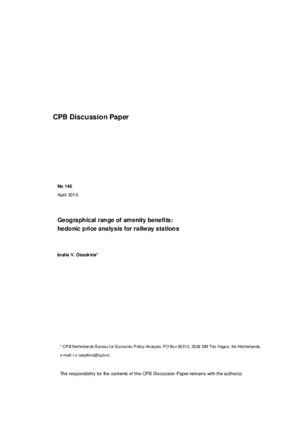Geographical range of amenity benefits: Hedonic price analysis for railway stations
Appartementen bij stations zijn gewild
We are sorry, unfortunately there is no English translation of this page.
People want to live nearby consumption amenities as this saves time on commuting. This paper develops a residential location model in which the geographical range and the magnitude of amenity benefits as reflected in residential prices can ex post be assessed.
First we extend a standard residential location model with a non-essential consumption amenity. We show that the geographical range of amenity benefits can be determined as the minimal distance to the amenity beyond which residential rents are independent of the distance to the amenity.
We next apply this insight in a hedonic analysis of the effect of proximity to a railway station on local housing prices in the wider metropolitan area of Amsterdam, the Netherlands. The geographical range of the railway stations is estimated to be 1.1 kilometer and the house price premium paid for station proximity is estimated to be 3 to 5 percent. We show furthermore that failing to account for the localized character of the amenity benefits can lead to a considerable under- or overestimation of the benefits.
